News - 06 September 2019
Hey Baby - How’s Your State’s Animal Doin’?
There is no denying it, the special native Australian animals chosen to be the mascots of our states and territories have seriously cute babies. This Threatened Species Day, we want to not only share how amazing these creatures are but also check in on how the species are going—because everyone wants more baby pictures in the future!
Western Australia: Numbat
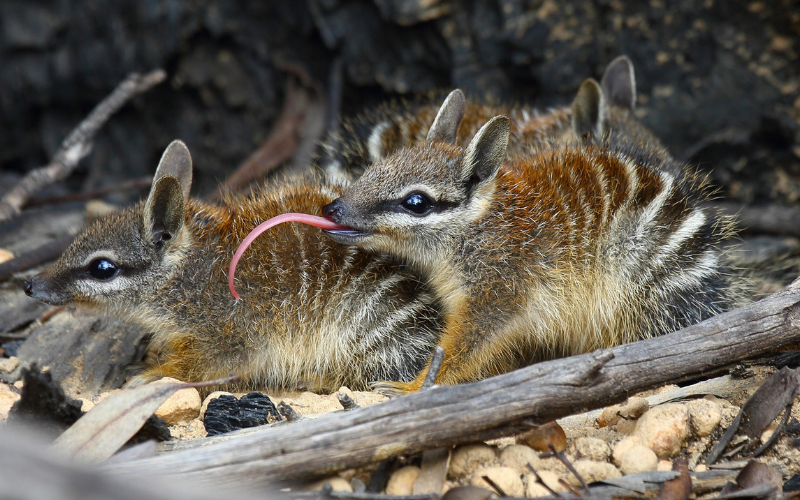
What a large tongue! These adorable little numbats use their long, slender sticky tongues to dip into narrow cavities to collect termites. In fact, these little numbat babies will never grow proper teeth like other mammals. They have blunt “pegs” because they do not chew their food, they are just happy to slurp termites all day long!
These little termite-eating machines used to be found across much of arid and semi-arid southern Australia. The state’s adoption of these small, stripy creatures as their state emblem may be the reason for their continued existence. Through the state's efforts to reduce foxes and cats, their main threat, numbat numbers have started to increase.
State-sponsored logging of their forest homes is deeply worrying for the survival of this endangered species. Numbats are dependent upon mature, old-growth forests for survival, but if the government continues to allow their forest homes to be chopped down we may lose these little guys.Tasmania: Tasmanian devil
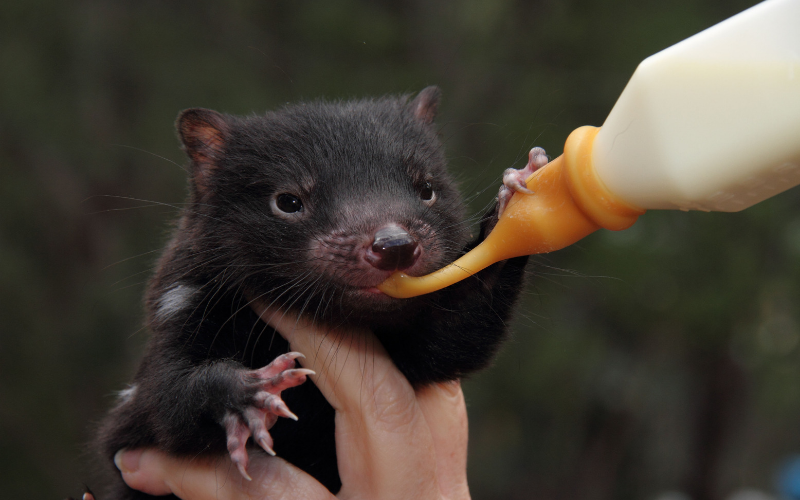
Does he look ferocious to you? Baby Tasmanian devils are called ‘imps’ or 'joeys', and they're adorable. When he grows up, however, his bite will be something to avoid! Devils have such strong jaws that they can bite as hard as a dog four times their size. That means a 10-kilogram devil can bite as hard as a 40-kilogram dog.
The Tassie devil is the world’s largest surviving carnivorous marsupial and is endangered within Tasmania, the only place where it remains in the wild. The biggest threat to this black-furred scavenger, with a reputed bad temper and famous yawn, is a lethal facial cancer which is sweeping through the population. Learn about how we are protecting Tasmania's forests.
Victoria: Leadbeater's Possum
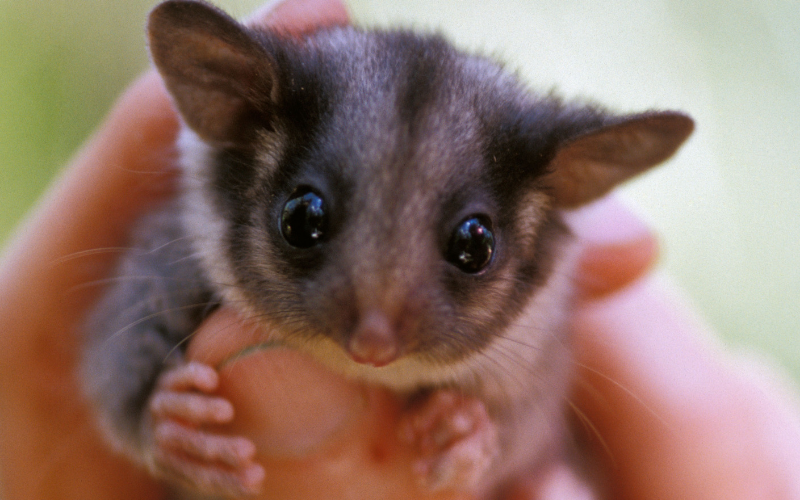
How cute is this little guy? Most people have never seen a Leadbeater’s Possum in the wild. Victoria’s animal emblem is lightning-fast, nocturnal & lives high up in the mountain ash forests of the State’s Central Highlands. Leadbeater's Possums are so small they can fit in the palm of your hand, like this baby.
Thought to be extinct in the early 20th century, its rediscovery near Marysville in 1961 was a great surprise. Now, due to state-sponsored logging of their forest homes, these tiny marsupials are critically endangered—ranked number 7 on a list of Australian mammals tipped to become extinct in the next 20 years. There is however another path for this little possum - the proposed Great Forest National Park could be the sanctuary this species desperately needs.
Queensland: Koala

This little koala joey is one of the world's most recognisable animals, but his unusual start to life is not widely known. Koalas are born high in a tree, no surprises there. But did you know koala joeys are born out of their mother’s central vagina? Female koalas have three vaginas—two for mating and one for birth. Why? It's complicated and deserves a complete blog on the subject.
As popular as they are with tourists, the koala is listed as vulnerable with numbers falling dramatically especially in Queensland and New South Wales. The biggest threats to this national icon are deforestation, as well as drought, fire and climate change.
New South Wales: Platypus
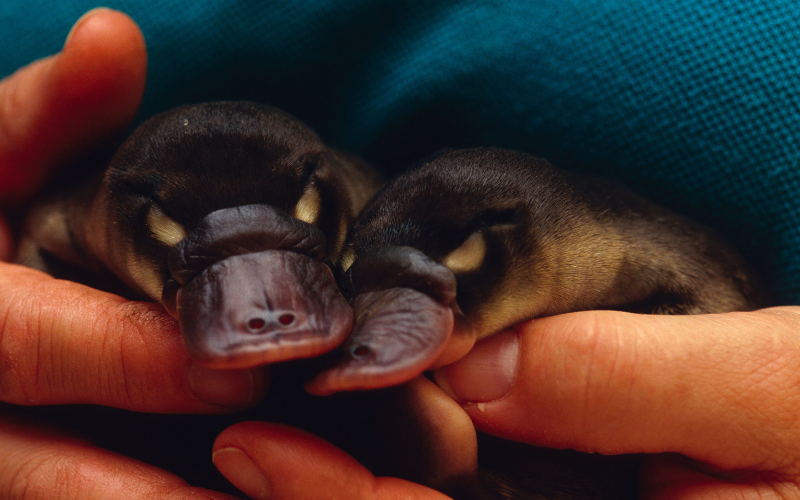
Born out of leathery eggs, puggles (the name for platypus babies) are arguably some of the most unique and adorable babies on the planet. Like most mammals, puggles nurse but their mums don’t have nipples. Instead, milk is released out of mammary gland ducts on the mother's abdomen. The puggles lap or slurp the milk from patches on their mother’s skin.
The rivers and streams throughout eastern Australia are home to these odd-looking creatures. The platypus is not listed on Australia’s threatened species list, however, with estimates of only 50,000 animals nationwide, its status was uplisted in 2014 from ‘Least Concern’ to Near Threatened on the global IUCN Red List.
South Australia: Southern hairy-nosed wombat
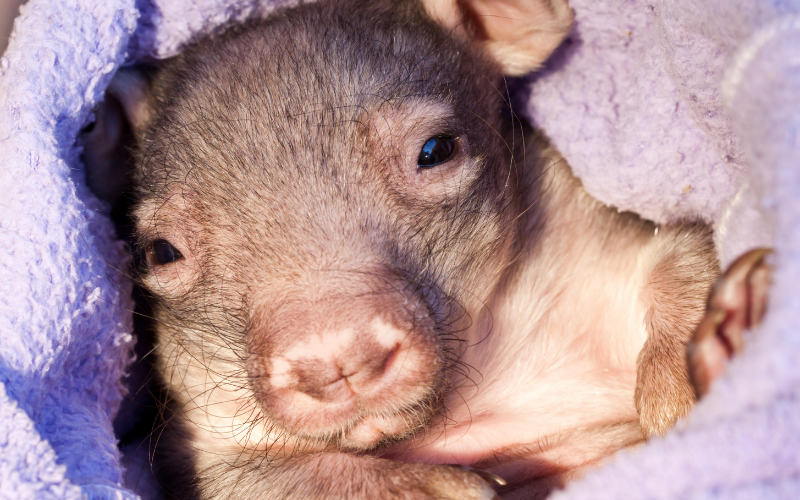
One thing we associate with all babies is poop. But when it comes to wombats things get a little square-shaped. All wombats, including South Australia’s animal emblem the Southern Hairy-Nosed Wombat, poop in cubes. Now imagine trying to make a nappy for that!
Nicknamed the ‘bulldozer of the bush’, this once widespread marsupial was found throughout Western Australia, New South Wales, Victoria and Queensland. Now 90 per cent of the population is found in South Australia after much of its habitat was destroyed for agriculture. While habitat destruction is no longer its main threat, this species listed as Endangered in NSW, and remains threatened by disease, over-grazing, climate change and drought.
Australian Capital Territory: Southern brush-tailed rock-wallaby
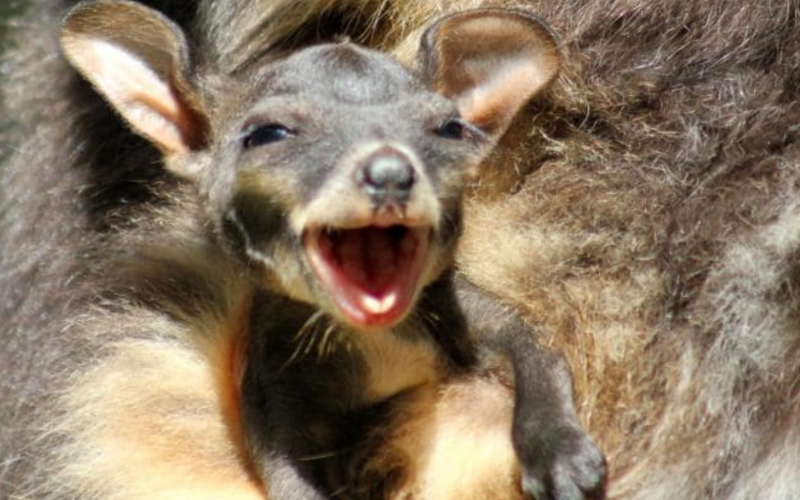
This little joey couldn’t look happier could he? And why not, he is very lucky to be here as the Southern brush-tailed rock-wallaby is among Australia's most critically endangered species with only about 40 remaining in the wild.
The latest addition to the nations faunal emblems, the Southern brush-tailed rock-wallaby was confirmed as the ACT state mammal in 2018 after a very competitive competition and public vote. As their name suggests, this endangered species prefers to live on rocky hills, where they love to climb almost vertical rocks and bake in the sun. Deforestation, the introduction of foxes and the fur trade have caused their numbers to collapse.
Northern Territory: Red kangaroo
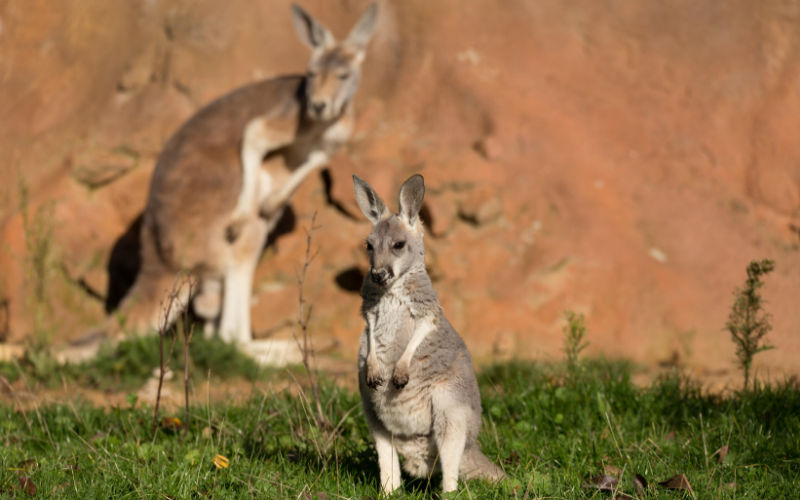
As far as a mother red kangaroo is concerned, there are no surprise babies! Like all kangaroos, the females have the unique ability to delay the birth of their joey until the time is right—until there is enough food around or until their previous joey has left the pouch. Isn’t nature impressive!
The red kangaroo is the world's largest marsupial and found throughout the semi-arid and arid regions of mainland Australia.